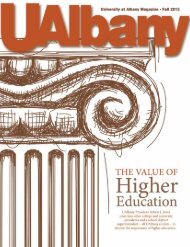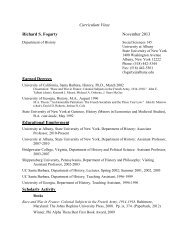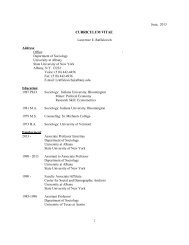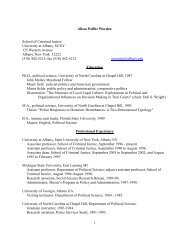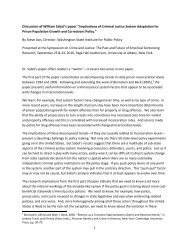Walking Corpses & Conscious Plants: Possibilist Ecologies in ...
Walking Corpses & Conscious Plants: Possibilist Ecologies in ...
Walking Corpses & Conscious Plants: Possibilist Ecologies in ...
You also want an ePaper? Increase the reach of your titles
YUMPU automatically turns print PDFs into web optimized ePapers that Google loves.
B<strong>in</strong>gham 48<br />
complete. To its left are the two bigger circles <strong>in</strong>tersect<strong>in</strong>g like l<strong>in</strong>ks of a cha<strong>in</strong>. The<br />
small circle rightmost on the page has been cut off and appears only <strong>in</strong> part. Because<br />
violence not only affects perpetrators and victims but their families as well, the fourth<br />
circle could be said to represent this spillover. If this read<strong>in</strong>g seems dubious, it's possible<br />
that shape represents an open<strong>in</strong>g of closed communities by mark<strong>in</strong>g the open<strong>in</strong>g of<br />
<strong>in</strong>tegral bodies; Rick's body, for example, dually signifies his own existence as well as<br />
that of law. S<strong>in</strong>ce the leftmost circle does not <strong>in</strong>tersect any others <strong>in</strong> the open<strong>in</strong>g panel,<br />
but is present <strong>in</strong> the second to last and f<strong>in</strong>al ones, it could depict how the location has<br />
been changed as a result of the standoff and spilled blood. Not only would this type of<br />
read<strong>in</strong>g suggest that the violent event alters the space itself, but also those connected to it.<br />
So the earlier speculation that the shape may represent those connected, but not present<br />
dur<strong>in</strong>g the event, also experienc<strong>in</strong>g transformation as a result of its occurrence still holds<br />
weight.<br />
Furthermore, this impact extends to readers. In The Object Stares Back: On the<br />
Nature of See<strong>in</strong>g, James Elk<strong>in</strong>s argues that “draw<strong>in</strong>gs are a place to observe the exchange<br />
between see<strong>in</strong>g and bl<strong>in</strong>dness and to mediate on the ways that bl<strong>in</strong>dness threads its way<br />
through vision” (235). Accord<strong>in</strong>gly the contemplation of an artwork can give viewers the<br />
chance to identify discont<strong>in</strong>uity <strong>in</strong> form and then translate that <strong>in</strong>to a tool for f<strong>in</strong>d<strong>in</strong>g it <strong>in</strong><br />
other areas of life. Earlier, Elk<strong>in</strong>s argues that sight is not objective but <strong>in</strong>stead is<br />
<strong>in</strong>fluenced by an observer's location <strong>in</strong> his or her environment (Object 12). The bl<strong>in</strong>dness<br />
he h<strong>in</strong>ts at is an obstruction created by particular experiential subjectivity that causes<br />
<strong>in</strong>dividuals to be attached to some objects or sentiments while completely miss<strong>in</strong>g others.<br />
Rather than referenc<strong>in</strong>g discovery as an action completely attributable to the viewer, he



